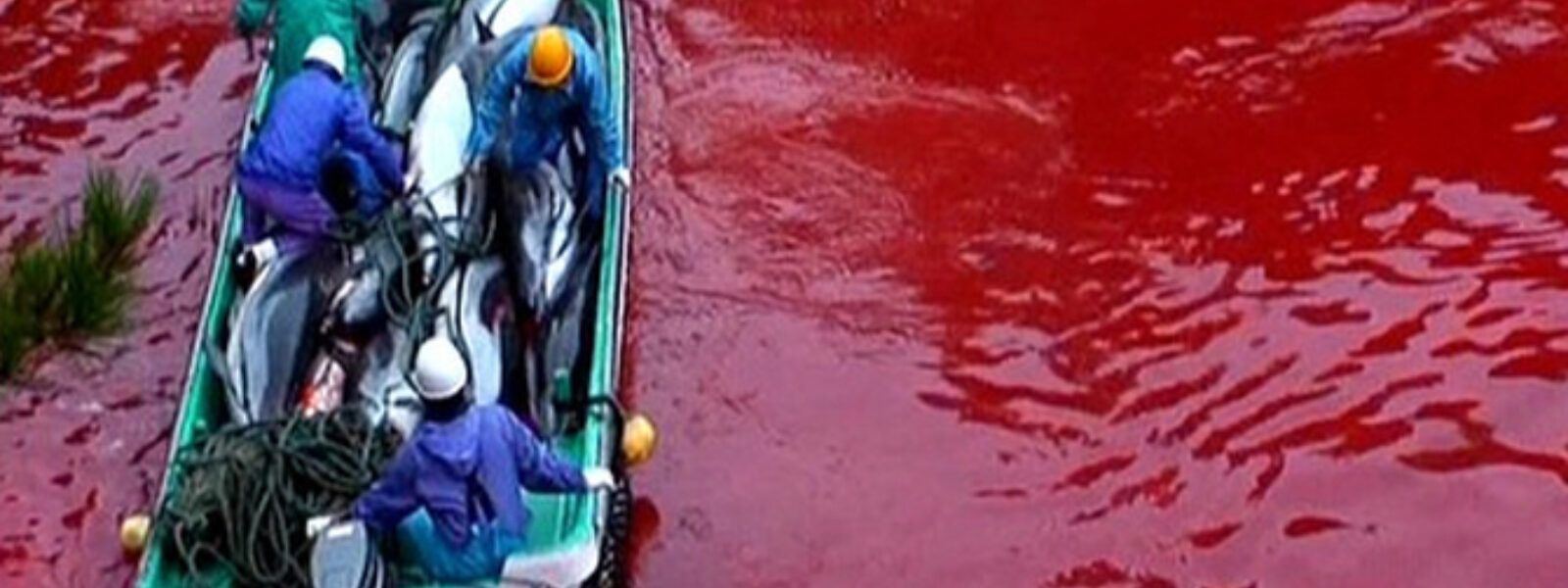

The International Marine Mammal Project (IMMP) of Earth Island Institute was one of the first organizations to reveal to the world that the bloody dolphin drive hunts in Taiji, Japan, were being subsidized by the global captivity industry and its insatiable hunger for live dolphins to perform for entertainment. This became a major theme in the Academy Award-winning documentary, The Cove, which featured the work of IMMP in Japan to end the hunts.
A series of new charts prepared by activist Stephano Vaini illustrates this reality.
A dolphin caught in Taiji and sold for food markets will bring in only $500 to $600 for the Taiji hunters. A live trained dolphin caught in Taiji is worth as much as $150,000 or more on the world market.
The number of dolphins killed for meat in Taiji has gone steadily down, ever since IMMP began our Save Japan Dolphins Campaign in 2004. But captures and sales of dolphins for captivity have increased, helping keep the dolphin hunters in business and wreaking havoc on Japan’s coastal dolphin populations.
In fact, Taiji town’s own written history states the drive hunts began in earnest in 1969 specifically to catch dolphins for the Taiji Whale Museum, which features a number of dolphins in captivity and regular dolphin shows. There is nothing “traditional” about the dolphin drive hunts. Since then, the hunts have grown in size, where individual “show quality” dolphins are captured for a life in small tanks, while the rest of the dolphin’s unfortunate family is often slaughtered or some, traumatized, released in order to maintain the illusion that the dolphin hunters are following quotas.

Chart #1 copyright Stephano Vaini; Used with permission.
This first chart illustrates the increase in captive dolphin exported from Japan that were caught in Taiji from 2010 to 2018. China (in red) represents the main captive industry market, as the number of aquariums with performing dolphins has skyrocketed in that country over the past ten years.
According to Reuters, there are an estimated 60 marine parks in China, with another 36 planned to open in the next two years. This boom in aquariums means China is fueling a lot of the slaughter in Taiji, as well as the illegal captures of orcas and beluga whales in Russia. Since 2014, about 872 live whales, porpoises and dolphins have been imported by China. Why? The parks are extremely popular with the Chinese public.
Other countries also import live dolphins from Taiji, including Russia, Ukraine, Thailand, South Korea in Asia, as well as Bahrain, Egypt, and other countries in the Middle East.

Chart #2 copyright Stephano Vaini; Used with permission.
Chart #2 again shows graphically how the demands of the Chinese captivity industry creates a renewed economic bonanza for the Taiji dolphin hunts. The increased trade has devastating impacts. Studies show that dolphins and whales have shortened life spans in captivity. When a dolphin dies, aquariums can simply order another one from Taiji, continuing the slaughter there and ruining the lives of hundreds of captive cetaceans.

Chart #3 copyright Stephano Vaini; Used with permission.
But not all the dolphins captured in Taiji are exported. Chart #3 illustrates this, with a large gap between the dolphins captured in Taiji (blue line) and the dolphin exported from Japan (red line). Where did these other captive dolphins go?
They seem to go to Japanese facilities. There are more than one hundred captive dolphin facilities in Japan, ranging from small floating and netted pens in harbors, where you can pay a few yen for a “dolphin encounter”, to larger aquarium complexes that duplicate SeaWorld and other similar large facilities. Again, these aquariums can always order new dolphins from Taiji when their animals die.
Thanks to an international campaign by IMMP and many other organizations, the World Association of Zoos and Aquariums took action to require their regional body, the Japan Association of Zoos and Aquariums (JAZA), to end sourcing of dolphins from the cruel Taiji dolphin hunts. Some Japanese aquariums, such as the Taiji Whale Museum, opted to drop out of JAZA in order to continue to grab live wild dolphins from the ocean through the Taiji dolphin hunters.
As long as people continue to buy tickets and go to aquariums to see live dolphins and whales, the slaughter of dolphins and the cruel captures that break up dolphin and whale families will continue.
Taiji dolphin hunt from The Cove courtesy of the Oceanic Preservation Society.